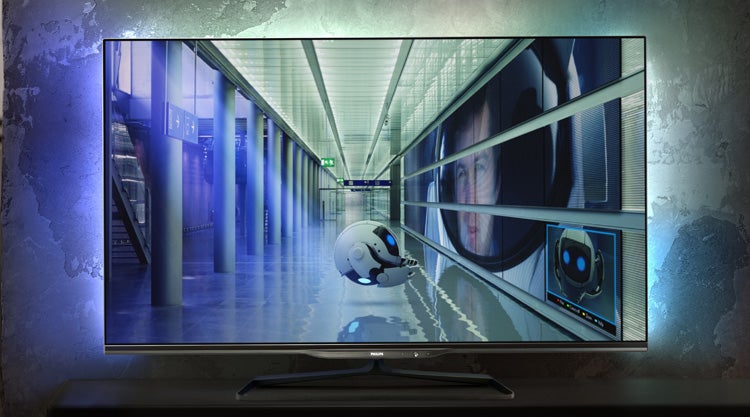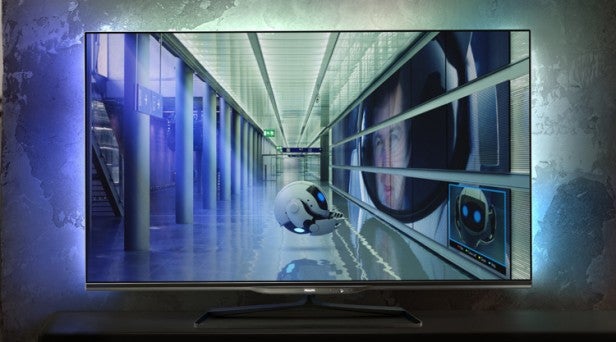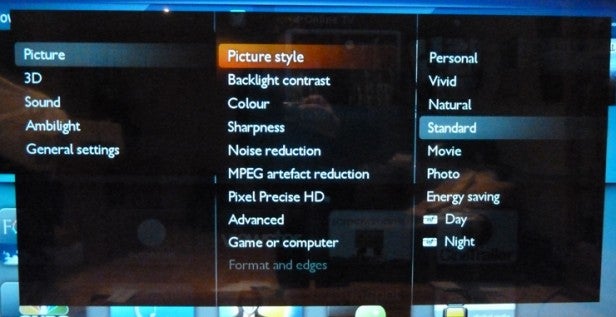Philips 55PFL7008 Review - Features and Picture Quality Review
Features and Picture Quality
Could Philips TVs be the surprise package of 2013? This 55-inch set is a good start.

Sections
- Page 1 Philips 55PFL7008 Review
- Page 2 Features and Picture Quality Review
- Page 3 3D and Conclusions Review
Philips 55PFL7008 – Picture Features
Looking quickly at the picture technology inside the Philips 55PFL7008, it uses Philips’ Pixel Precise HD platform (a level down from the Perfect Pixel HD engine found in the PFL8008 series) together with a native 100Hz panel and scanning backlight to deliver a 700Hz-like motion effect. It uses edge LED lighting driven by a micro-dimming engine to produce a claimed contrast ratio of 500,000:1, and its 3D playback is of the passive flavour, with four pairs of glasses included.
Picture adjustments are extensive, not least because most elements of the Pixel Precise HD engine can be turned on or off, or have their potency adjusted. You additionally get the option to adjust the colour temperature and hue/saturation values for the three primary and three secondary colours if you select one of the two ISF picture preset slots.
Many of Philips’ belated 2012 TVs impressed us greatly in the picture quality department. But oddly, while by no means bad, the Philips 55PFL7008’s pictures left us feeling just a little uninspired.
Philips 55PFL7008 – Picture Quality
The main reason why is that the set’s contrast performance isn’t quite as good as expected. Using any of the many picture presets black colours look infused with a gentle bluish-grey wash. You can, thankfully, greatly improve this issue by radically ramping down the set’s backlight contrast option. We went right down to below 20 on the 1-100 scale, in fact, before the screen started delivering a black colour we felt comfortable with.
There is, though, an inevitable problem with taking so much backlight intensity out of pictures, namely that they lose an awful lot of brightness. This isn’t a major deal, perhaps, if you can get your room very dark when watching a film. But it isn’t an ideal solution for typical living room conditions – especially as the Philips 55PFL7008’s screen tends to be rather reflective of ambient light.
It should be added that using such a low backlight also causes a little – though thankfully it really is only a little – shadow detail to get squeezed out of the picture.
In other respects the Philips 55PFL7008’s pictures are good. For starters, while getting a good black level response out of the TV might be hard, there are at least no problems at all with backlight inconsistency clouds, even when using the relatively bright picture presets.
Colours are good, too. Using the provided picture presets they look dynamic and bold yet also nuanced and reasonably natural. After taking down the backlight contrast to our preferred level they lose some of their intensity, but they also became more natural in tone and even more subtle with their blends and tonal shifts.
Philips TVs have long been renowned for the sharpness of their pictures, and this trend continues with the Philips 55PFL7008. Detailing with HD sources is extreme, yet provided you don’t bother with the provided sharpness booster pictures don’t look gritty or noisy, and object edges don’t look over-wrought.
Also playing its part in the image’s sharpness is the panel’s innately good motion reproduction. This lets it show even action-heavy sequences with minimal resolution loss – even if you don’t bother with Philips’ Perfect Natural Motion processing system, which we found could leave the picture looking a bit processed and flickery over fast-moving objects. Experience suggests that Perfect Natural Motion works better when driven by the extra power delivered by the Perfect Pixel HD engine used on the upcoming PFL8008 models.
The 55PFL7008 is also strong when it comes to upscaling standard
definition pictures to the screen’s full HD pixel count, adding
excellent sharpness without introducing new noise or exaggerating any
noise that might be in the source. Colours don’t take the tonal hit they
do with some LCD TVs in standard def mode, either.
How we test televisions
We test every TV we review thoroughly over an extended period of time. We use industry standard tests to compare features properly. We’ll always tell you what we find. We never, ever, accept money to review a product.

